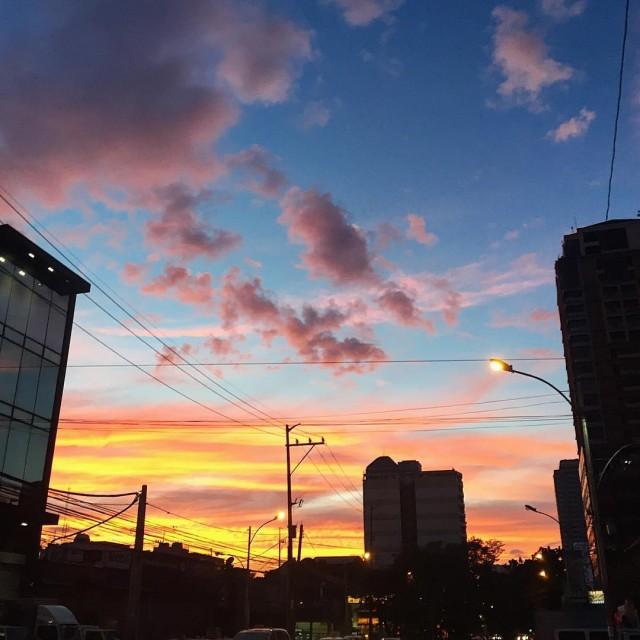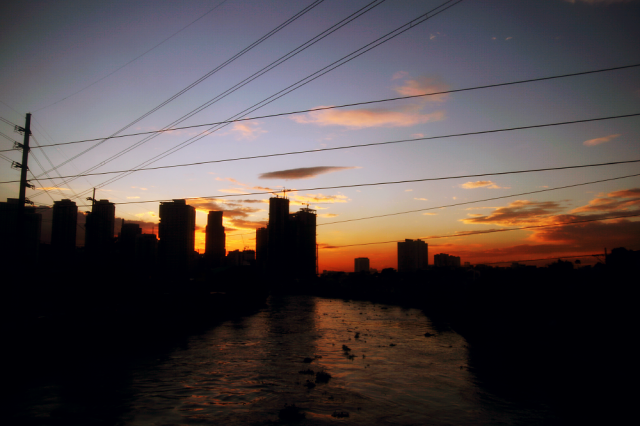Beautiful danger: The science behind our orange sunsets
Across the horizon, slowly but surely, blue gives way to a pinkish orange. It is at this point in the day when eager shutterbugs hold on to their cameras, patiently waiting for what they call the golden hour.
During this brief period of time — right before the sunset — the world is bathed in a warm, golden glow.
“The golden hour in the Philippines lasts from 15 to 30 minutes,” shares Emil Jaranilla, a nature photography enthusiast. Well-traveled and well-acquainted with countless photography subjects, Emil calls sunsets “the most fulfilling, yet most frustrating” subjects to take. Based on his experience, even the smallest logistical hiccup or weather discrepancy can ruin an otherwise perfect shot.
Still, despite these challenges (and his admitted preference for marine photography), sunsets hold a special place in Emil’s heart.
“Our sunsets are beautiful,” says Emil. He explains that, based on his experience, sunsets in tropical countries are generally more vibrant than anywhere else. According to him, the color of the sunset is based on the weather, humidity, season, and pollution.
The idea that air pollution causes bright, beautiful sunsets is hardly a new one. In fact, the phenomenon is often paraded as the only positive result of the abundance of airborne pollutants in any particular area.
How accurate is this belief, though? Is there really a dangerous truth behind beautiful sunsets?

A polluted myth
To gain a better understanding of what truly causes beautiful sunsets, it would help to first examine the science behind them.
A phenomenon called Rayleigh scattering (named after Lord Rayleigh, the British physicist who wrote about it in 1871) causes the various wavelengths of light to be scattered, affecting the color of the sky in different ways depending on what time it is.
During the day, the sky turns blue because the sun’s position is high up in the sky; sunlight travels a relatively shorter path through our atmosphere to reach us. Thus, the small particles in our atmosphere (primarily nitrogen and oxygen molecules) end up scattering the shortest wavelengths (blue and purple) across the sky, making it appear to be blue.
As the day progresses and the sun changes its position in the sky, the distance between the ground and the sun grows, meaning sunlight travels a longer distance to reach where we are. This also means that sunlight ends up traveling through a longer stretch of atmosphere.
The Rayleigh effect still causes the shorter wavelengths of light to be scattered, but by the time the sunlight reaches our eyes, the shorter wavelengths would have already been thoroughly diffused elsewhere across the atmosphere, leaving only the longer wavelengths of light — the reds, oranges, and yellows — for us to see.
The particles in the air — aerosols — are comprised of molecules of different sizes. These particles may be solid or liquid, and may result from both natural occurrences or man’s activities. Aerosols resulting from natural causes (such as, for instance, smog from the eruption of a volcano) tend to block out only a single wavelength of light. Combined with the nitrogen and oxygen particles in the atmosphere, this effect produces a vibrant sunset with a single dominant color, often red.
On the other hand, man-made aerosols (also known as anthropogenic aerosols) are made up of varying types and sizes of particles. As a result, the scattering of light is inconsistent and all over the place; instead of allowing just one color to shine through, we end up seeing a mix of grayish white and a handful of weak, muted colors — a combination that doesn’t quite paint an impressive picture, so to speak.
Red alert
“When an area is extremely polluted, it’s hard to get even a single good shot,” says Emil. He says that these days, in order to get a good shot of the sunset, he finds himself having to travel to rural — and therefore less polluted — areas.
Try it for yourself: Observe how the sky looks at sunset. If you’re in Metro Manila, you’ll likely see a faint mix of orange, yellow, and pink, with a dull, gray haze seemingly floating right above it.

Based on statistics from the crowdsourced database Numbeo, the Philippines currently ranks as the 28th most polluted country in the world. As of 2017, Metro Manila’s pollution level is 70% higher than the “safe” level recommended by the World Health Organization (WHO).
At the rate we’re going, it’s not so farfetched to think that one day, we will no longer see anything but the faintest hues of orange as the sun goes down, instead of our once-beautiful sunsets.
Even more alarming, though, is the likelihood that when that time comes, it is Mother Nature who will start seeing red.




